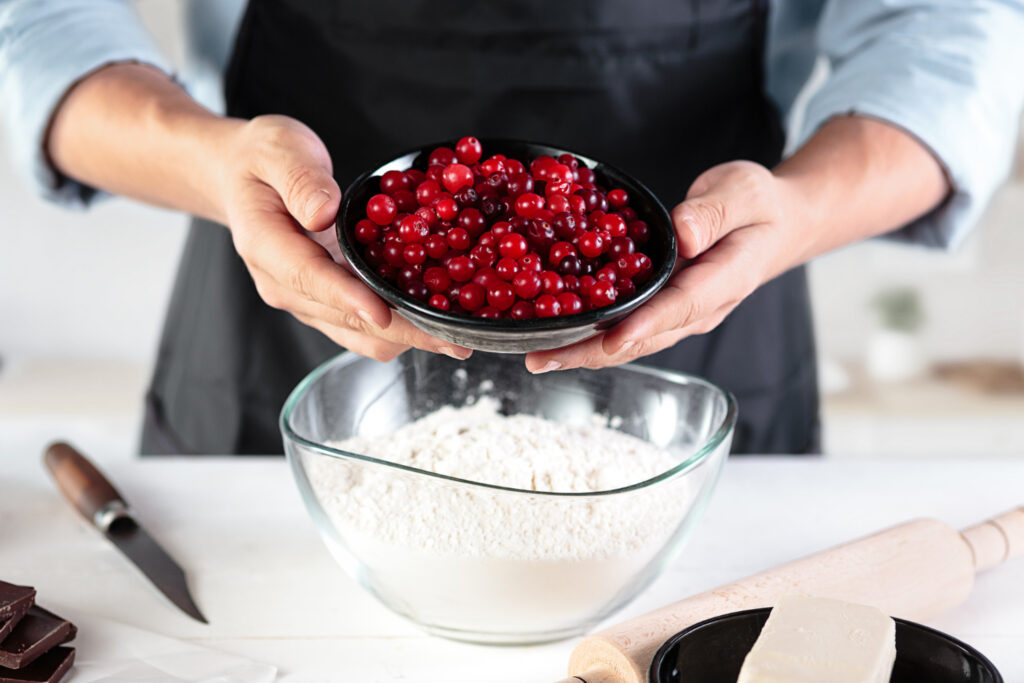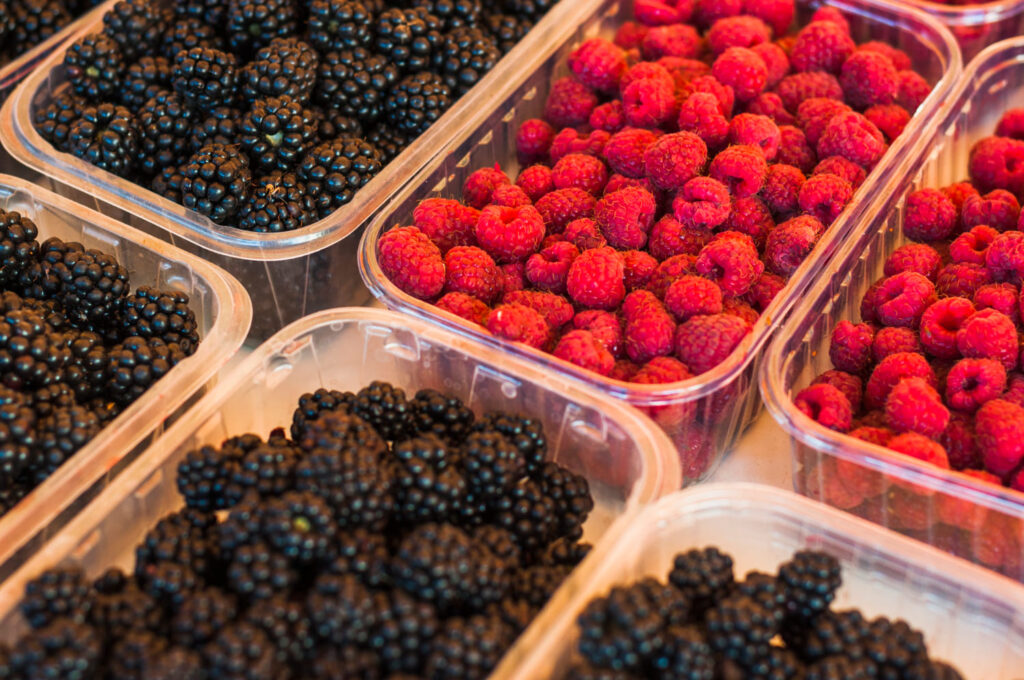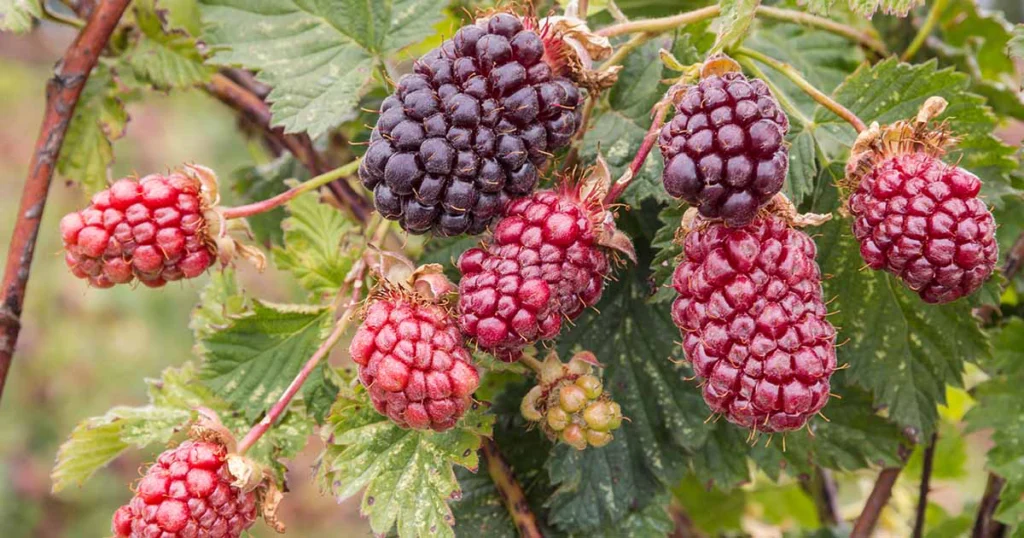Boysenberry, a delightful fruit that combines the flavors of blackberries, raspberries, dewberries, and loganberries, has a fascinating history that traces back to Rudolph Boysen, a horticulturist from California. This maroon-colored berry is a hybrid fruit loved for its rich taste and versatility. It’s a favorite among berry enthusiasts due to its unique blend of sweetness and tartness.
Origins and Development
Rudolph Boysen created the boysenberry by cross-pollinating different berry species, resulting in a large, flavorful fruit. Boysen’s experiments led to the birth of this berry, which later caught the attention of George M. Darrow and Walter Knott. Knott, a skilled farmer, played a crucial role in nurturing and commercializing the boysenberry in Southern California.
Rise to Popularity
Walter Knott’s efforts in the 1930s to cultivate and sell boysenberries at his farm stand marked the start of its commercial success. The popularity of boysenberries led to Knott’s Berry Farm, a famous attraction that further popularized the fruit through various products.
Cultivation of Boysenberries
Boysenberries are a delightful hybrid fruit that combines the flavors of raspberries, blackberries, and loganberries. Here is a summary of the cultivation process for boysenberries based on the provided sources:
Planting Location: Boysenberries thrive in full sun locations with well-draining, sandy loam soil that has a pH of 5.8-6.5. Avoid areas where tomatoes, eggplants, or potatoes have grown before to prevent soil-borne diseases like verticillium wilt.
Planting Process: When planting boysenberry plants, dig a hole 1-2 feet deep and 3-4 feet wide. For row-planted plants, space the holes 8-10 feet apart. Plant the boysenberry with the crown 2 inches below the soil line, spread roots, fill hole, and water thoroughly.
Support and Care: As the boysenberry plant matures, it will require support like a three-wire trellis. Keep the plants evenly moist by watering at the base to avoid leaf diseases and fruit rot. Fertilize the plants with a 20-20-20 application in early spring and consider using nutrient sources like fish meal and blood meal.
Harvesting: Boysenberries typically grow new stems that fruit in their second year and then die. They are ready for harvest in the summer months. The fruit is best enjoyed fresh or can be made into juice, preserves, jams, or used in various culinary creations like pies and desserts.
Propagation: Home gardeners can propagate boysenberries through various methods, such as planting dormant bare roots, small nursery plants, cuttings, tip layering, or root cuttings. While growing from seed is possible, it is rarely used as it may not produce true boysenberries.
Cultivating boysenberries involves selecting the right planting location, providing proper support, care, and maintenance, and harvesting the fruit during the summer months. With the right conditions and care, home gardeners can enjoy the juicy and flavorful boysenberries straight from their garden.
Culinary Uses of Boysenberries
Boysenberries are a versatile fruit that can be used in a variety of culinary creations, both sweet and savory. Here are some key insights from the provided sources on the culinary uses of boysenberries:
Sweet Treats: Boysenberries are perfect for creating a range of sweet desserts such as pies, crumbles, crisps, cobblers, cakes, jams, and syrups. They can be enjoyed fresh, added to yogurt, ice cream, or fruit salads, or blended into smoothies.
Italian Cuisine: In Italian cuisine, boysenberries can be used to make gelato, crostatas, and balsamic reductions. They add a tangy twist to dishes like risotto and pair well with creamy textures like burrata cheese.
Asian Cuisine: Boysenberries can be incorporated into Asian dishes to create unique flavor profiles. In Chinese cuisine, they can be used to make tangy and sweet sauces for stir-fried meats or vegetables. In Japanese cuisine, they can enhance summer desserts like shaved ice or mochi. Korean cuisine can benefit from boysenberries in spicy sauces for grilled meats or bibimbap.
Beverages: Boysenberries can also be used to create refreshing beverages like smoothies, fruit-infused teas, and cocktails. Their vibrant flavor adds a delightful twist to drinks, making them perfect for hot summer days.
Storage: Boysenberries are best eaten fresh but can be stored in the fridge for about a week. If not consumed immediately, they can be frozen for later use in cooking or baking.
Boysenberries are a culinary delight that can elevate a wide range of dishes, from desserts to savory meals and beverages. Their unique flavor profile, combining tartness and sweetness, makes them a versatile ingredient that adds depth and vibrancy to various culinary creations.

Health benefits of boysenberries
Boysenberries offer a range of health benefits due to their nutritional content. Here are some key health benefits of boysenberries based on the provided sources:
Cardiovascular Health: Boysenberries are beneficial for cardiovascular health as they can help lower cholesterol and triglyceride levels, reduce inflammation, prevent arterial plaque formation, promote proper circulation, and lower blood pressure.
Immune System Support: Packed with immune-boosting nutrients like vitamin C and antioxidants, boysenberries strengthen the immune system, making individuals less susceptible to allergies, flu, colds, and other illnesses.
Skin Health: Boysenberries contain Vitamin C, which provides anti-aging properties, and promotes healthy skin by neutralizing free radicals, supporting collagen and elastin production, and reducing the appearance of scars and wrinkles.
Cancer Prevention: The antioxidants and phytonutrients in boysenberries may help prevent cancers like prostate, pancreatic, colorectal, and breast cancer by fighting free radicals and inhibiting tumor growth.
Bone Health: Boysenberries contribute to bone health by providing a good source of vitamin K, which plays a role in maintaining bone quality and cardiovascular health.
Energy Boost: Boysenberries are a natural energy booster due to their high levels of vitamin C.
Antioxidant Power: Boysenberries are rich in antioxidants like anthocyanins and ellagic acid, which have anti-cancer, antibacterial, and antiviral properties and help protect against brain aging, Alzheimer’s disease, inflammation, and cancer.
High Fiber Content: With a high fiber content, boysenberries can help prevent heart disease, cancer, diabetes, gallstones, and kidney stones, aid digestion, and reduce digestive issues.
Vitamin-Rich: Boysenberries are a good source of various vitamins, including Vitamin A, B vitamins (B1, B2, B5), and Vitamin K1, as well as minerals like manganese, copper, magnesium, potassium, zinc, iron, calcium, phosphorus, and selenium.
Incorporating boysenberries into your diet can provide a wide array of health benefits ranging from cardiovascular support to immune system strengthening and skin health improvement.
Side effects of eating boysenberries
Based on the provided sources, potential side effects are associated with eating boysenberries. Here are some key points regarding the side effects of boysenberries:
Allergic Reactions: Some individuals may experience allergic reactions to boysenberries, which can manifest as itching, swelling, stomach discomfort, rashes, throat irritation, and even mouth swelling and itching.
Digestive Issues: Excessive consumption of boysenberries can lead to stomach disorders, acidity, and diarrhea. Additionally, boysenberries can decrease sodium levels in the body, which may be harmful.
Kidney Stone Risk: Boysenberries have a high potassium and oxalate content, which can increase the risk of kidney stone formation and other renal complications. Therefore, individuals with kidney stone issues should avoid consuming boysenberries.
Other Considerations: Canned boysenberries may not be suitable for individuals with diabetes as they can increase blood sugar levels. It is important to be mindful of potential side effects and consume boysenberries in moderation to avoid any adverse reactions.
While boysenberries offer numerous health benefits, it is essential to be aware of the potential side effects associated with their consumption, especially for individuals prone to allergies or specific health conditions like kidney stones or diabetes.
Storage Guidelines
To store boysenberries properly, follow these guidelines:
Preparation: Discard any moldy or crushed berries before storing. Do not wash the berries before storing them.
Refrigeration: Seal the boysenberries in a food protection container, like GladWare, and store them in the refrigerator. Boysenberries can be kept fresh for up to a week when refrigerated.
Freezing: To freeze boysenberries, remove moldy or rotten berries, rinse, and dry them thoroughly. Spread the berries on a baking sheet and place them in the freezer until completely frozen. Transfer the frozen berries to freezer bags or containers, remove excess air, seal them, and store them in the freezer. Frozen boysenberries can be stored for 1-180 days.
By following these storage methods, you can ensure that your boysenberries stay fresh and flavorful for an extended period, whether refrigerated or frozen.

Current Status and Future Prospects
While boysenberries face challenges in commercial production due to their short shelf life and specific cultivation requirements, they remain a beloved fruit among home growers and berry enthusiasts. Despite the decline in commercial popularity, the unique taste and heritage of boysenberries continue to captivate those who appreciate the distinct flavors this hybrid berry offers.
You can also read: Intricacies of Fig Trees
FAQs about Boysenberries
How do I know when boysenberries are ripe?
A: Ripe boysenberries will have a deep, uniform purple color and will easily detach from the stem when gently pulled. They should also be plump and firm to the touch, indicating sweetness and juiciness.
Can boysenberries be frozen?
A: Yes, boysenberries can be frozen for long-term storage. Wash and dry the berries thoroughly, then spread them in a single layer on a baking sheet and freeze until firm. Transfer the frozen berries to airtight containers or freezer bags and store them in the freezer for up to 6-12 months.
When are boysenberries in season?
Boysenberries are typically in season during the summer months, from late spring to early fall, depending on the region and climate.
What sets boysenberries apart from other berries?
Boysenberries stand out for their unique flavor profile, combining the best of raspberries, blackberries, and loganberries. They are also rich in antioxidants, vitamins, and minerals, making them a valuable addition to a healthy diet.
Conclusion
In conclusion, the boysenberry stands out as a remarkable fruit with a rich history and a complex flavor profile that blends the best of various berry varieties. Whether enjoyed fresh, in baked goods, or as preserves, boysenberries remain a cherished fruit that embodies the art of horticultural innovation and culinary delight.


1 Comment
Thanks for sharing. I read many of your blog posts, cool, your blog is very good.